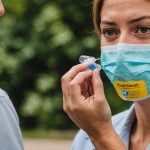Exploring Innovative Therapies for Overcoming Drug-Resistant Tuberculosis
Tuberculosis (TB), caused by the bacterium Mycobacterium tuberculosis (Mtb), remains one of the deadliest infectious diseases globally, claiming over 1.3 million lives annually. The rise of drug-resistant TB has complicated treatment protocols, making it imperative to develop innovative therapies. Here, we delve into the latest advancements and potential solutions in the fight against drug-resistant TB.
The Challenge of Drug Resistance in TB
Drug resistance in TB is a significant public health concern. When TB bacteria become resistant to the drugs used to treat the disease, it leads to a more complex and prolonged treatment process. This resistance can arise due to various factors, including incomplete or inadequate treatment, poor adherence to treatment regimens, and the misuse of antibiotics.
Also read : What role does community gardening play in promoting mental health and well-being?
Impact on Patients and Health Systems
For patients, drug-resistant TB means longer treatment durations, often extending to 20 months or more, compared to the standard 6-month treatment for drug-susceptible TB. This prolonged treatment can lead to increased side effects, higher costs, and a greater burden on health systems.
### Key Statistics on Drug-Resistant TB:
- **Global Prevalence**: Drug-resistant TB accounts for approximately 10% of all new TB cases worldwide.
- **Treatment Duration**: Drug-resistant TB treatment can last up to 20 months or more, compared to 6 months for drug-susceptible TB.
- **Mortality Rate**: Patients with drug-resistant TB have a higher mortality rate compared to those with drug-susceptible TB.
- **Economic Burden**: The economic impact of drug-resistant TB is significant, affecting not only the patients but also the broader healthcare system and economy.
New Therapies and Treatment Regimens
Several new therapies and treatment regimens are being developed and tested to combat drug-resistant TB.
Also to see : Unlocking the Power of Herbal Supplements: Proven Benefits for Boosting Your Immune System
Host-Directed Therapy: A Promising Approach
One innovative approach involves host-directed therapy, which targets the host’s immune response rather than the bacteria directly. A recent study by the Texas Biomedical Research Institute has shown promising results using an IDO (Indoleamine-2,3-dioxygenase) inhibitor. This therapy, initially used in cancer treatment, has been found to improve TB control in conjunction with antibiotics without interfering with combined antiretroviral therapy (cART) for patients with HIV.
### How IDO Inhibitors Work:
- **Immune System Modulation**: IDO inhibitors block the IDO protein, which normally suppresses the immune system to prevent excessive inflammation and organ damage.
- **Enhanced Immune Response**: By inhibiting IDO, the immune system can mount a more effective response against TB bacteria.
- **Safety with cART**: Studies have shown that IDO inhibitors do not increase viral load in patients receiving cART, making them safe for use in HIV/TB coinfected patients.
Bedaquiline-Containing Regimens
Another significant development is the use of bedaquiline-containing regimens for rifampicin-resistant TB. The STREAM stage 2 trial demonstrated that these regimens are effective and safe, with superior outcomes compared to traditional injectable-based regimens. The trial showed that a 9-month oral regimen and a 6-month regimen, both containing bedaquiline, had lower rates of unfavorable outcomes and fewer severe adverse events.
### Comparison of Bedaquiline-Containing Regimens:
| Regimen | Duration | Unfavorable Status at Week 132 | Serious Adverse Events |
|
|-----------|
|--------------------------|
| Oral Regimen | 9 months | 19.6% | Few, including 3% hearing loss |
| 6-Month Regimen | 6 months | 9.8% | Few, no significant difference in severe hearing loss |
| Control Regimen | 9 months | 29.3% | Higher, including 8% hearing loss |
Source:
Novel Semi-Synthetic Compounds
Researchers have also identified novel semi-synthetic compounds derived from natural sources that show potent activity against Mtb, including multi-drug resistant strains. One such compound, BPD-9, derived from sanguinarine, has demonstrated effectiveness against non-replicating and intracellular Mtb and may spare the microbiome, reducing the risk of harming beneficial bacteria.
### Characteristics of BPD-9:
- **Potent Activity**: Effective against multi-drug resistant *Mtb* strains.
- **Target Specificity**: Active against pathogenic bacteria from the *Mycobacterium* genus, sparing other beneficial bacteria.
- **Reduced Toxicity**: Designed to be less toxic compared to the natural compound sanguinarine.
Vaccine Development: A Long-Term Solution
While new drugs and therapies are crucial, vaccines offer a long-term solution to controlling TB. The World Health Organization (WHO) has emphasized the need for new vaccines that are effective across all age groups, particularly adults and adolescents.
M72/AS01E Vaccine Candidate
The M72/AS01E vaccine candidate has shown significant promise in clinical trials. In a Phase IIb trial conducted in Kenya, South Africa, and Zambia, this vaccine demonstrated 50% efficacy against TB disease in individuals with latent TB infection over a three-year follow-up period. This breakthrough has sparked renewed interest in TB vaccine development.
### Key Features of M72/AS01E Vaccine:
- **Efficacy**: 50% efficacy against TB disease in individuals with latent TB infection.
- **Duration**: Protection observed over approximately three years.
- **Target Population**: Effective in adolescents and adults, a demographic that current vaccines do not adequately protect.
Practical Insights and Actionable Advice
For patients and healthcare providers, here are some practical insights and actionable advice:
Adherence to Treatment
Adhering strictly to the prescribed treatment regimen is crucial. Drug resistance often arises from incomplete or inadequate treatment.
Monitoring and Follow-Up
Regular monitoring and follow-up are essential to ensure that the treatment is effective and to catch any signs of resistance early.
New Therapies and Clinical Trials
Patients should be aware of new therapies and clinical trials that may offer better treatment outcomes. Participating in clinical trials can provide access to innovative treatments before they become widely available.
Public Health Initiatives
Supporting public health initiatives and advocating for increased funding for TB research can help accelerate the development of new treatments and vaccines.
The fight against drug-resistant TB is multifaceted and requires a combination of innovative therapies, improved treatment regimens, and the development of effective vaccines. As research continues to advance, there is hope for better treatment outcomes and a reduction in the global burden of TB.
In the words of Dr. Smriti Mehra, “This is an important hurdle that this host-directed therapy had to clear in order to help patients battling both HIV and TB.” Such breakthroughs, along with the development of new drugs and vaccines, bring us closer to a future where TB is more manageable and less deadly.
As we move forward, it is crucial to continue supporting research, improving treatment adherence, and advocating for public health initiatives to combat this ancient yet still formidable disease.











